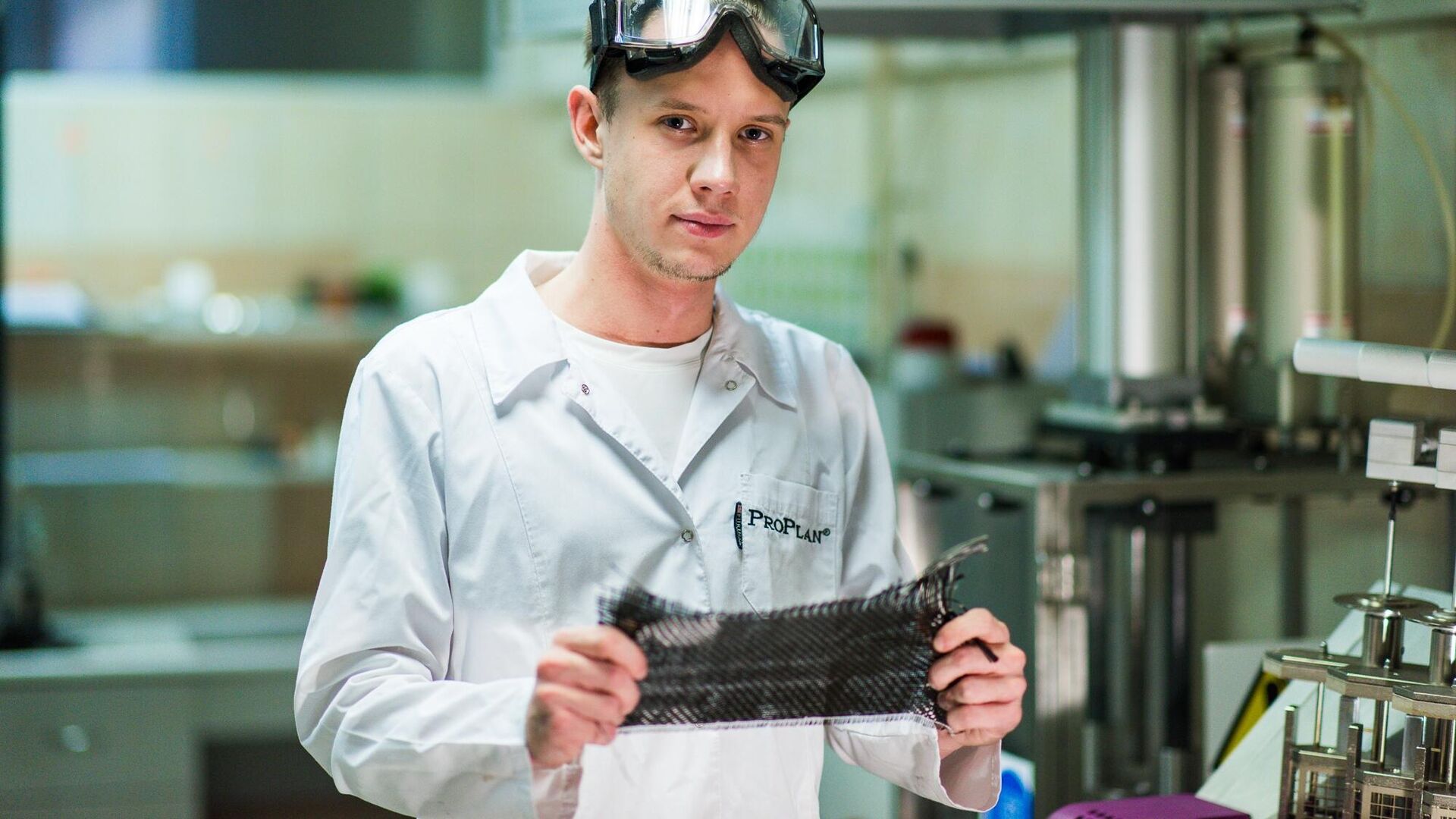https://sputnikglobe.com/20220317/russian-scientists-create-antibacterial-textile-materials-1093936087.html
Russian Scientists Create Antibacterial Textile Materials
Russian Scientists Create Antibacterial Textile Materials
Sputnik International
Researchers from the National University of Science and Technology “MISiS” (NUST MISIS) – along with fellow Russian colleagues – have created a new technology... 17.03.2022, Sputnik International
2022-03-17T07:00+0000
2022-03-17T07:00+0000
2022-03-17T07:00+0000
russia
scientists
scientific research
science & tech
russian national university of science and technology (misis)
https://cdn1.img.sputnikglobe.com/img/07e6/03/10/1093936042_0:210:2000:1335_1920x0_80_0_0_3cae13b36a5a5087a6743cb534227c5d.jpg
The developed technology involves the modification of materials through the application of low-pressure gas-discharge radiofrequency plasma. The authors of the research believe the new method can be widely used in medicine, according to a study published in the Journal of Materials Letters.The research aimed at giving antibacterial properties to non-woven textile materials started at the same time as the COVID-19 outbreak.Patients suffering from severe COVID-19 have been reported to have a weakened immune system, which contributes to the development of secondary bacterial infections. Therefore, scientists set out to create a bacteriostatic material for the production of disposable surgical and medical clothing, underwear, and other products. The use of such materials could help to contain the spread of pathogenic bacteria in hospital environments.The material with antibacterial properties was then treated with a methane-argon gas mixture. Methane, included as a monomer in many polymers, was used as a building unit on the surface of the non-woven material, binding the antibacterial agents to the surface. The resulting products were then sterilised in an autoclave.In the future, the scientific team plans to use radiofrequency gas-discharge plasma in the production of composite materials, improving their physical, mechanical and operational properties.This study was carried out in cooperation with the Kazan National Research Technological University (KNRTU), the Skolkovo Institute of Science and Technology, and the N.N.Blokhin Russian Cancer Research Centre under the Priority 2030 programme.
Sputnik International
feedback@sputniknews.com
+74956456601
MIA „Rossiya Segodnya“
2022
Sputnik International
feedback@sputniknews.com
+74956456601
MIA „Rossiya Segodnya“
News
en_EN
Sputnik International
feedback@sputniknews.com
+74956456601
MIA „Rossiya Segodnya“
Sputnik International
feedback@sputniknews.com
+74956456601
MIA „Rossiya Segodnya“
scientists, scientific research, science & tech, russian national university of science and technology (misis)
scientists, scientific research, science & tech, russian national university of science and technology (misis)
Russian Scientists Create Antibacterial Textile Materials
Researchers from the National University of Science and Technology “MISiS” (NUST MISIS) – along with fellow Russian colleagues – have created a new technology to add antibacterial properties to non-woven textile materials.
The developed technology involves the modification of materials through the application of low-pressure gas-discharge radiofrequency plasma. The authors of the research believe the new method can be widely used in medicine, according to
a study published in the Journal of Materials Letters.
The research aimed at giving antibacterial properties to non-woven textile materials started at the same time as the COVID-19 outbreak.
Patients suffering from severe COVID-19 have been reported to have a weakened immune system, which contributes to the development of secondary bacterial infections. Therefore, scientists set out to create a bacteriostatic material for the production of disposable surgical and medical clothing, underwear, and other products. The use of such materials could help to contain the spread of pathogenic bacteria in hospital environments.
“To give the non-woven material antibacterial properties, it was first placed in a closed system between two electrodes. The system was pumped out to a medium vacuum and at the same time, argon was introduced into the system. Creating an electromagnetic field, we accelerate gas from the cathode to the anode and ‘bombard’ the material, thereby breaking the molecular bonds of the polymer composition. The functionalized surface was then saturated with antibacterial agents by immersing it in a tank with suspensions of concentrated colloidal solution of silver nanoparticles,” Ilya Larin, one of the authors of the study, a graduate of NUST MISIS’ iPhD Biomaterial Science, told Sputnik.
The material with antibacterial properties was then treated with a methane-argon gas mixture. Methane, included as a monomer in many polymers, was used as a building unit on the surface of the non-woven material, binding the antibacterial agents to the surface. The resulting products were then sterilised in an autoclave.
In the future, the scientific team plans to use radiofrequency gas-discharge plasma in the production of composite materials, improving their physical, mechanical and operational properties.
This study was carried out in cooperation with the Kazan National Research Technological University (KNRTU), the Skolkovo Institute of Science and Technology, and the N.N.Blokhin Russian Cancer Research Centre under the Priority 2030 programme.


